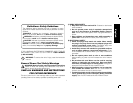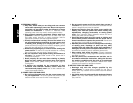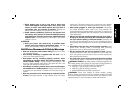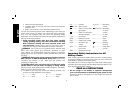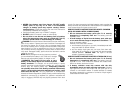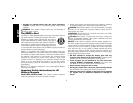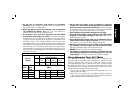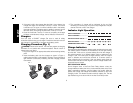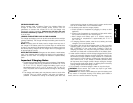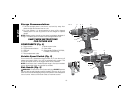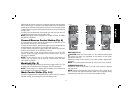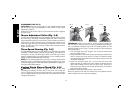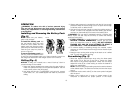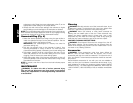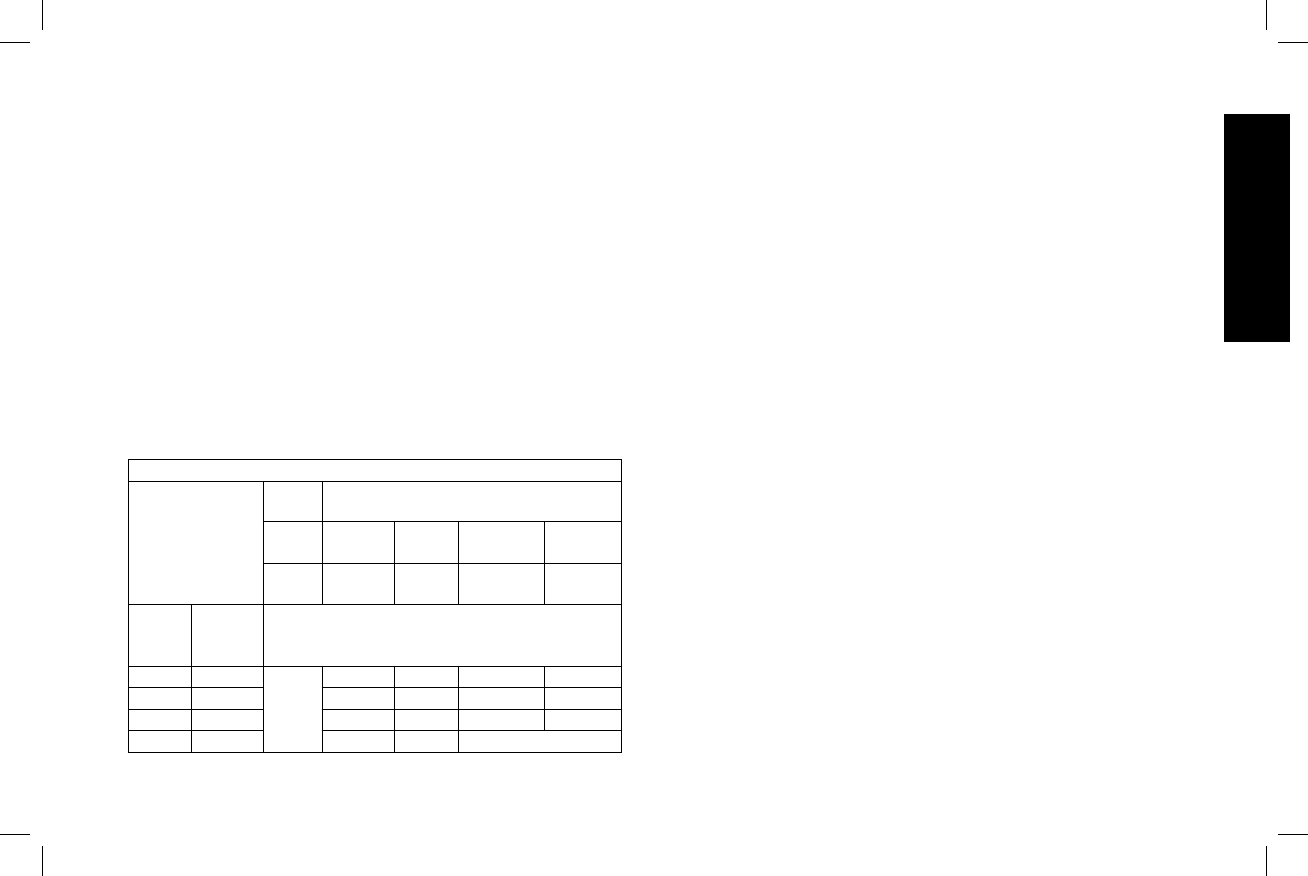
• Do not use an extension cord unless it is absolutely
necessary. Use of improper extension cord could result in risk of
fire, electric shock, or electrocution.
• When operating a power tool outdoors, use an extension
cord suitable for outdoor use. Use of a cord suitable for
outdoor use reduces the risk of electric shock.
• An extension cord must have adequate wire size (AWG
or American Wire Gauge) for safety. The smaller the gauge
number of the wire, the greater the capacity of the cable, that is
16 gauge has more capacity than 18 gauge. An undersized cord
will cause a drop in line voltage resulting in loss of power and
overheating. When using more than one extension to make up the
total length, be sure each individual extension contains at least the
minimum wire size. The following table shows the correct size to
use depending on cord length and nameplate ampere rating. If in
doubt, use the next heavier gauge. The smaller the gauge number,
the heavier the cord.
Minimum Gauge for Cord Sets
Ampere
Rating
Volts Total Length of Cord
in Feet (meters)
120 V 25
(7.6)
50
(15.2)
100
(30.5)
150
(45.7)
240 V 50
(15.2)
100
(30.5)
200
(61.0)
300
(91.4)
More
Than
Not
More
Than
AWG
0 6 18 16 16 14
610 1816 14 12
10 12 16 16 14 12
12 16 14 12 Not Recommended
• Do not place any object on top of charger or place the
charger on a soft surface that might block the ventilation
slots and result in excessive internal heat. Place the charger
in a position away from any heat source. The charger is ventilated
through slots in the top and the bottom of the housing.
• Do not operate charger with damaged cord or plug.
• Do not operate charger if it has received a sharp blow, been
dropped, or otherwise damaged in any way. Take it to an
authorized service center.
• Do not disassemble charger; take it to an authorized service
center when service or repair is required. Incorrect reassembly
may result in a risk of electric shock, electrocution or fire.
• Disconnect the charger from the outlet before attempting
any cleaning. This will reduce the risk of electric shock.
Removing the battery pack will not reduce this risk.
• NEVER attempt to connect two chargers together.
• The charger is designed to operate on standard 120 volt
household electrical power. Do not attempt to use it on any
other voltage. This does not apply to the vehicular charger.
Using Automatic Tune-Up™ Mode
The automatic Tune-Up™ Mode equalizes or balances the
individual cells in the battery pack allowing it to function at peak
capacity. Battery packs should be tuned up weekly or after
10 charge/discharge cycles or whenever the pack no longer delivers
the same amount of work. To use the automatic Tune-Up™, place
the battery pack in the charger and leave it for at least 8 hours. The
charger will cycle through the following modes.
1. The red light will blink continuously indicating that the 1-hour
charge cycle has started.
2. When the 1-hour charge cycle is complete, the light will stay on
continuously and will no longer blink. This indicates that the pack
is fully charged and can be used at this time.
English
7





